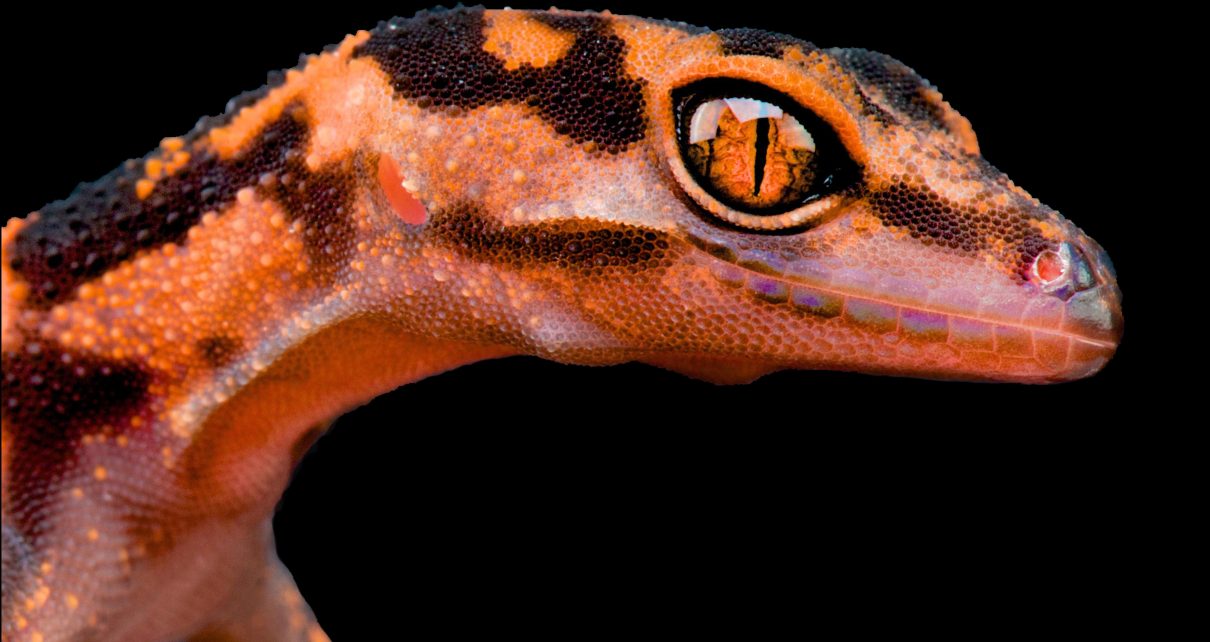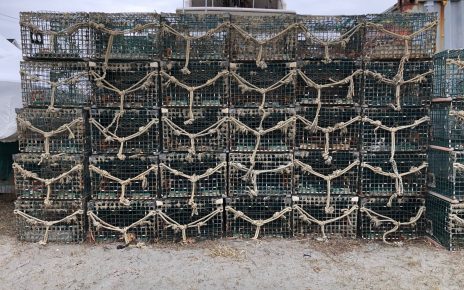Cave geckos exemplify evolution at its most fantastic. Some have bloodred eyes and sport bright yellow bands down their dark body. Others are Popsicle blue or bear camouflagelike patterns of fiery orange and brown. Many species of these lizards are only found over a tiny range, such as a single limestone hill in China. More than a dozen are listed as threatened with extinction, some of them critically so, by the International Union for Conservation of Nature (IUCN).
Yet partly because they are rare and imperiled, cave geckos are all the rage among reptile collectors. They are among the nearly 4,000 reptile species—including highly endangered ones—that are routinely traded online, according to a paper published on Tuesday in Nature Communications. Animals from 90 percent of those species, representing half of the individual reptiles traded on the Web, are captured from the wild, the authors found. And the majority of these species are not included in any international regulations meant to ensure their trade is sustainable. “At the moment, the status quo is that anything can be traded until you say it can’t,” says study co-author Alice Hughes, an ecologist at the Chinese Academy of Sciences. “This leaves thousands of species vulnerable to extinction.”
As the new paper shows, no organization keeps track of global trade data for species that are not included in the Convention on International Trade in Endangered Species of Wild Fauna and Flora (CITES), a global treaty created in 1973 to ensure commerce involving wild species does not imperil them. Hughes was interested in determining how representative CITES is in terms of the international reptile trade, which affects snakes, lizards, turtles, tortoises and crocodilians, among others. She and her colleagues compiled official data from 2000 to 2019 from CITES and U.S. Fish and Wildlife Service records and then gathered their own information from Web sites that sell reptiles. For the latter, they used an algorithm to identify and scrape the data from nearly 24,000 pages at 151 Web sites in English, German, Spanish, Japanese and French.
The researchers tallied 3,943 species, or 36 percent of all known reptile species, for sale online. Most were those that are legal to trade as pets. But the question of whether a given species can be legally sold internationally is not automatically linked to its conservation status. More than a third of the reptiles on the list—including Borneo’s earless monitor lizard and Madagascar’s Uroplatus finaritra, a leaf-tailed gecko—have not been evaluated for their conservation status. This situation means scientists have no way of knowing if trade impacts those species’ survival. Of the ones that have been evaluated, more than 500 are listed by the IUCN as in danger of extinction. That group includes more than 100 species that are critically endangered, such as Lauhachinda’s cave gecko in Thailand and Yamashina’s ground gecko in Japan.
The study’s findings still underestimate the true number of reptile species caught up in trade, Hughes says, because its analysis did not include social media sites—where previous research has shown that high levels of wildlife trade take place. The paper also lacks results from Web sites in languages other than the five it considered.
Additionally, the research does not attempt to quantify how many individuals of each species are sold online, says Vincent Nijman, a wildlife trade expert at Oxford Brookes University in England, who was not involved in the study. “The paper highlights that, indeed, trade affects a very large number of species,” he says. “But if you really want to change policy, you must have a more definite idea of the real volumes involved. That’s not a criticism of this study, but that’s ultimately where we have to go with future work.”
Hughes and her colleagues found that 79 percent of reptile species sold online are not regulated by CITES. For those species and others that are not part of the treaty, quantities would likely be impossible to determine, Hughes says, because no agency tracks them.
To be included in CITES, species must go through a lengthy nomination process—one that, on average, takes more than 10 years to complete, according to a 2019 Science paper. Just showing that trade threatens a species is also not necessarily enough to warrant adding it to the treaty, because commercial interests often take precedence over science, conservationists have warned. “I attended the CITES conference last year in Geneva, and I was frankly stunned by how much of it seemed to be purely economically motivated,” Hughes says.
The academic world perhaps “underestimates the overall cost of regulating species under CITES,” the CITES Secretariat wrote in a statement to Scientific American. “It is probably true that the strong compliance mechanisms that CITES developed over the years, and for which it is feared and famous, have more impact if species are involved that are commercially important” for the relevant countries where those species are found.
John Scanlon, former secretary-general of CITES, who was not involved in the study, says he does not share the observation that the treaty’s members often value economic considerations over scientific ones. Lesser known species of birds, insects, frogs, lizards, rodents, snakes, turtles, and more “do not make the headlines, like issues do with cheetah, giraffes, lions, elephants and rhinos, but they do make up a majority of the listing proposals,” he says. “CITES is imperfect, but it has proven to be quite effective.”
That said, “there are clearly gaps in our knowledge and data on trade in unlisted species, including reptiles,” Scanlon adds. “This report shows that parties should be proposing more reptiles for listing under CITES, which, on the face of this report, looks warranted.”
Hughes questions whether the treaty is the best tool for quickly ensuring the pet trade does not imperil species, however. A more effective strategy, she says, would be for individual countries to pass legislation banning the import of certain wild-caught animals, as the U.S. and European Union have already done for many bird species. At the same time, the pet industry could transition to captive-breeding operations with necessary oversight. “We are not against keeping exotic animals as pets, but it has to be sustainable,” Hughes says. “We need to develop better systems for making sure pet trade does not lead to species extinctions.”




